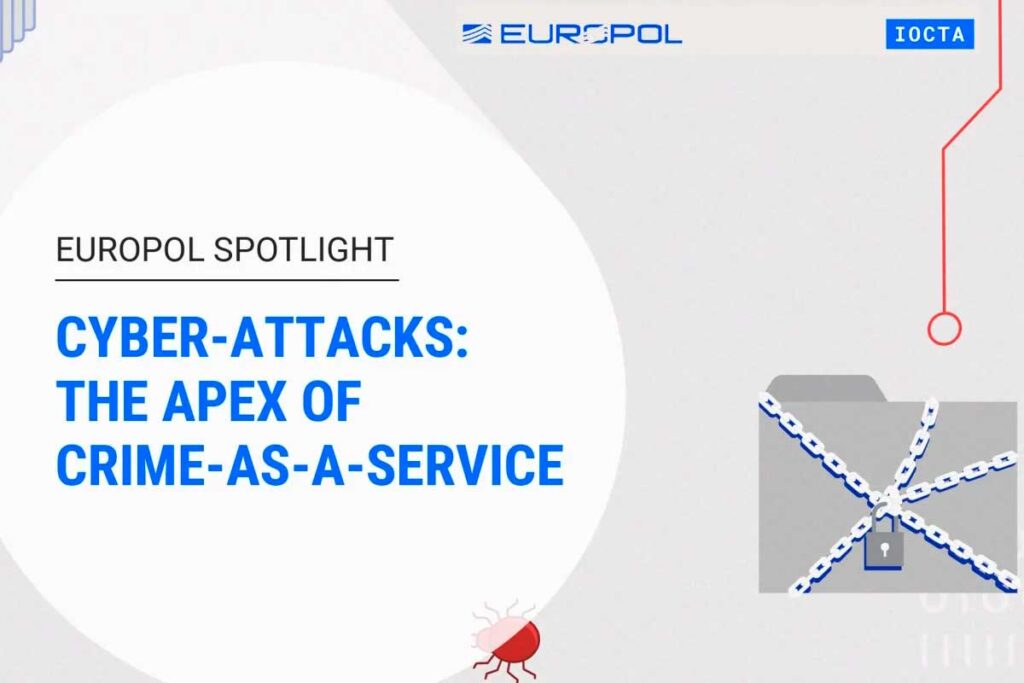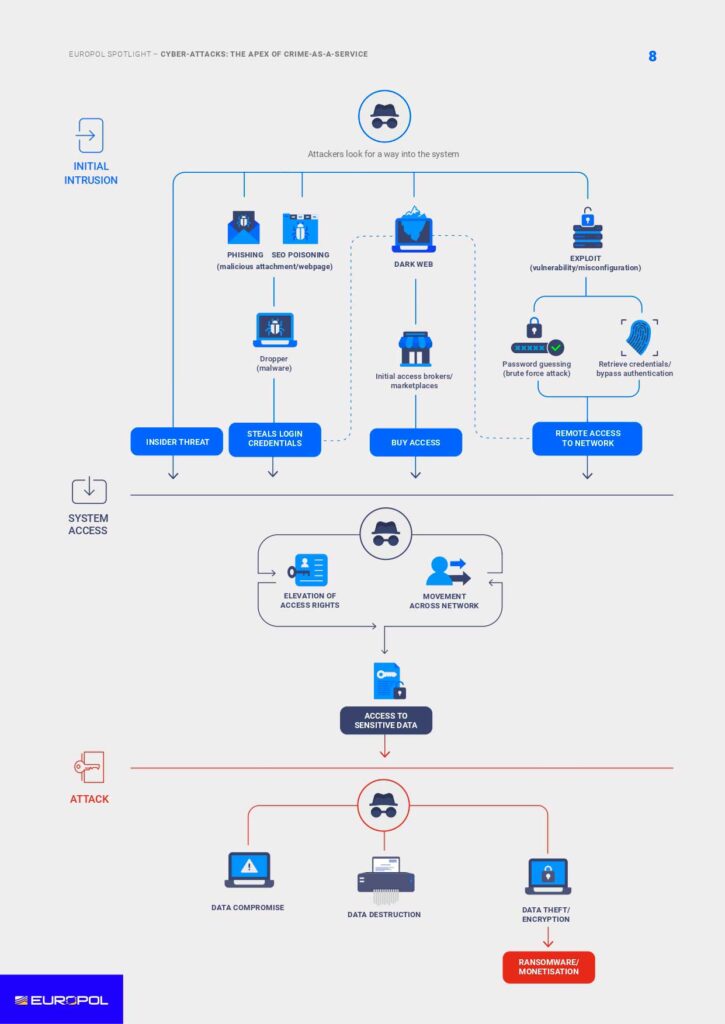Europol recently published an insightful report on malware-based cyberattacks on September 13, 2023. This new Europol 2023 report highlights the current methodologies and threats observed by the agency’s operational analysts. It offers an in-depth perspective on the criminal structures behind these attacks and how these increasingly professionalized groups exploit geopolitical changes in their operations.
Table des matières
ToggleKey findings of the Europol 2023 report
The rapidly changing digital landscape has led to an alarming increase in cyber attacks. According to Europol’s latest report, malware-based attacks, particularly ransomware, have become the most significant threat in the world of cybersecurity. These attacks have a significant financial impact on the industry. The September 2023 report offers an in-depth analysis of the nature of these attacks and the business structures of ransomware groups. What’s more, the theft of sensitive data could become the central objective of cyberattacks, fuelling the booming criminal market in personal information.

Europol’s report highlights the growing sophistication of the methods used by cybercriminals. With the rapidly evolving adoption of technology in almost every aspect of daily life, the opportunities for cybercriminals to launch attacks have also increased. All businesses, from the largest to the smallest, have become prime targets, as they often hold large amounts of sensitive data.
Ransomware: the dominant threat
According to Europol’s report, ransomware remains the main scourge of cybercrime in Europe and worldwide. Despite the efforts of institutions and businesses to strengthen their defenses, cybercriminals continue to steal increasingly sensitive data. Ransomware groups have adopted a clear approach to targeting international businesses, public organizations, critical infrastructures and essential services.
No longer content to target isolated companies or individuals, attackers are now targeting entire institutions, from hospitals to schools and governments. The reason is simple: the potential gains are much higher.
What’s more, the anonymous nature of cryptocurrency transactions has made the ransom payment process almost untraceable, encouraging more cybercriminals to adopt this method. The groups behind these attacks are increasingly organized, often operating like real businesses with clear hierarchies and specializations.
Analysis of different cyberattack techniques and tactics
Cybercriminals use a variety of methods to infiltrate systems. Among the most common are phishing e-mails containing malware, brute force attacks on the RDP protocol and the exploitation of VPN vulnerabilities. In addition, the report points out that Russia’s war of aggression against Ukraine has led to a significant increase in DDoS attacks against EU targets. These methods, though different in approach, share a common goal: to infiltrate systems and gain access to data.
Cybercriminals’ different modus operandi :
- Phishing: This technique involves sending fraudulent e-mails imitating official bodies or companies, with the aim of deceiving recipients and extracting personal information, such as passwords or bank details.
- Brute-force attacks (DDoS): aimed at gaining access to a system or account by continually trying different combinations of passwords until the right one is found.
- Exploiting VPN vulnerabilities: Attackers look for loopholes in virtual private networks (VPNs) to gain access to internal networks and steal sensitive information.
- Use of malware: Programs specifically designed to damage or exploit any device, network, service or computer program.
- Man-in-the-middle (MitM) attack: involves intercepting and sometimes altering communications between two parties without their realizing it.

Knowledge of these modus operandi is essential to implement effective security measures and protect systems against potential threats.
Europol’s recommendations for dealing with cyber attacks
Faced with the growing threat of cyber attacks, Europol has taken proactive steps to support EU member states. In 2013, Europol established the European Cybercrime Centre (EC3) to provide dedicated support for cybercrime investigations in the EU. EC3 offers operational, strategic, analytical and forensic support to member state investigations, including malware analysis, cryptocurrency tracing training and tool development.
In addition to the implementation of EC3, Europol has also issued a series of recommendations for businesses and individuals. These recommendations include the implementation of robust security measures, employee awareness and training, and the establishment of incident response protocols to rapidly respond to cyberattacks.
Decoding cybercrime: key findings from Europol’s report
The cyber-crime landscape is constantly evolving, with new threats emerging on an almost daily basis. Europol’s report underlines the importance of remaining vigilant and proactive in the face of these threats. As cybercriminals continue to perfect their techniques, it is imperative that businesses, governments and individuals take preventative measures to protect their data and systems. Collaboration, education and preparation are essential to ensure a safe and secure computing environment for all.
